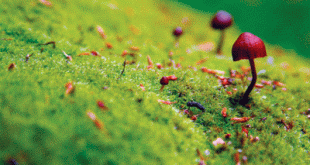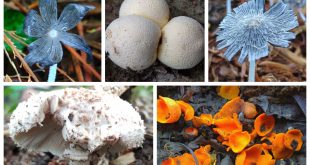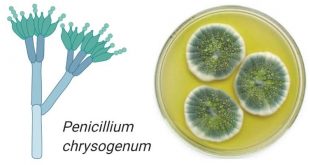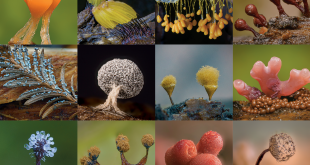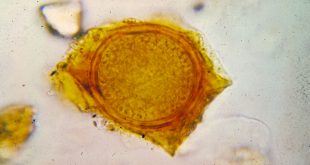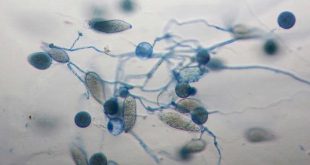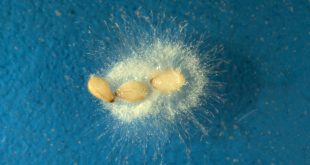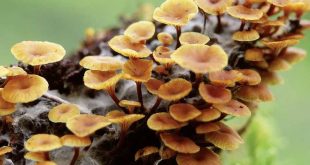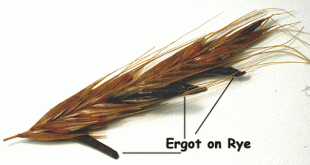Deuteromycetes- also known as Deuteromycota, Deuteromycotina, fungi imperfecti and mitosporic fungi- are fungi that are unable to produce sexual spores and are therefore placed in their own separate phylum. It is an artificial group of fungi, of which there exist approximately 15000 species. Deuteromycetes are often reffered to as “fungi …
Read More »Fungi: A Kingdom of Achlorophyllous Eukaryotes
Fungi {sing. fungus (L.) = sphongos (Gr.) – sponge} are a kingdom of usually multicellular, eucaryotic, spore-producing, achlorophyllous organisms with absorptive nutrition that generally reproduce both sexually and asexually and whose usually filamentous, branched somatic structures, known as hyphae, typically are surrounded by cell walls. Currently, over 1.5 million species …
Read More »Importance of Fungi: Medicine, Agriculture & Industry
We usually think of fungi as organisms that cause diseases and rot food. But fungi are important to human life in many ways. The manifestations of this group of organisms have been known for thousands of years. Since the first toast was proposed over a shell full of wine and …
Read More »Fungi: 10 Most Harmful effects of Fungi
Fungi are important to human life in many ways. In medicine they yield antibiotics, in agriculture maintain soil fertility, in regular life consumed as food, and most importantly form the basis of many industrial processes. Though fungi are essential to many household and industrial processes, they are detrimental or harmful …
Read More »Slime Molds: The Most Charismatic and Clever Single Cell You’ll Meet Today!
Slime mold or slime mould is an informal name given to several kinds of unrelated eukaryotic organisms that can live freely as single cells, but can aggregate together to form multicellular reproductive structures. Slime molds were formerly classified as fungi but are no longer considered part of that kingdom. Although not forming …
Read More »Life cycle of Synchytrium endobioticum
Article author: Shawon Gosh Payell Synchytrium endobioticum is one of the chytrid fungi which causes black scab or the wart disease of potato. Though potato is the only cultivated host but Some other plants of the genus Solanum are also infected by it. According to Karling (1964), it has a …
Read More »Oomycetes: Order Peronosporales
Order Peronosporales, Aquatic or terrestrial; parasitic on algae or vascular plants, the latter mostly obligate parasites causing downy mildews; in advanced species, zoosporangia borne on well-differentiated sporangiophores, deciduous and behaving as conidia (asexually produced spores); example genera include Albugo, Peronospora, Bremia, and Plasmopara. Habitat They are aquatic, amphibious and terrestrial species. Forming a highly group …
Read More »Oomycetes: Order Saprolegnia
The oomycetes, also known as “water molds”, are a group of several hundred organisms that include some of the most devastating plant pathogens. The diseases they cause include seedling blights, damping-off, root rots, foliar blights and downy mildews. Some notable diseases are the late blight of potato, downy mildew of …
Read More »Agaricales: Agarics & Boletes
Agaricales is an order of fungi in the class Agaricomycetes (phylum Basidiomycota, kingdom Fungi). It is one of the most diverse orders of the phylum Basidiomycota. Traditionally, agarics were classified based on the presence of gills (thin sheets of spore-bearing cells, or basidia) and mushroom-shaped fruiting bodies. Some other conspicuous …
Read More »Clavicipitales: Ergot by Claviceps Purpurea
Claviceps are member of the pyrenomycetes, fungi which are referred when they form perithecial ascocarp. They are important as the parasites of many endophytes in their life as discussed below- Classification Class: Ascomycetes Sub-class: Hymenomycetidae I, Hymenomycetidae II. Order: Hypocreales Family: Clavicipitaceae Genus: Claviceps Vegetative structure The intercellular hyphae are …
Read More » Plantlet The Blogging Platform of Department of Botany, University of Dhaka
Plantlet The Blogging Platform of Department of Botany, University of Dhaka
